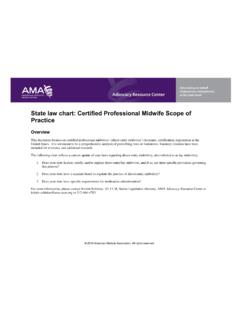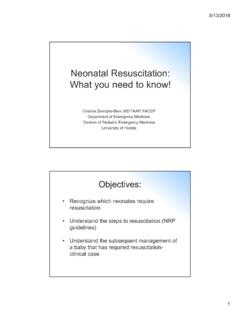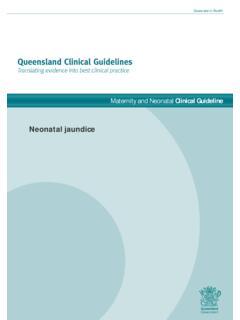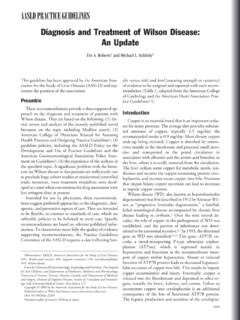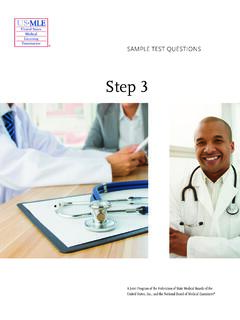Transcription of ABCs of Neonatal Jaundice: AAP guidelines, Bilirubin ...
1 ABCs of Neonatal Jaundice: AAP guidelines, Bilirubin Basics, and Cholestasis Vicky Parente Sea Pines Conference July 11, 2018. Outline History of Neonatal jaundice Review of Bilirubin physiology and causes of hyperbilirubinemia in the newborn period Balance between harms and benefits of treating Neonatal jaundice AAP guidelines History: Early Findings Christian Georg Schmorl coined term kernicterus . In 1904 published findings of 280. Neonatal autopsies 120 of whom were jaundiced at death and 114/120 had kernicterus History: Continued 1950-1970s aggressive treatment with exchange transfusion and then phototherapy Marked decline in kernicterus 1980-1990s thought that therapy may be too aggressive Infants started being discharged prior to peak TSB. concentration Resurgence of kernicterus 1994- AAP establishes treatment guidelines 2002- NQF Kernicterus never event.
2 2004 Most recent treatment guidelines update clarification in 2009. Outline History of Neonatal jaundice Review of Bilirubin physiology and causes of hyperbilirubinemia in the newborn period Balance between harms and benefits of treating Neonatal jaundice AAP guidelines Key Terms Bilirubin Hyperbilirubinemia Jaundice Kernicterus Bilirubin exceeds the Exam finding of yellow albumin-binding Breakdown product of High level of Bilirubin eyes and skin capacity, crosses BBB, red blood cells in the blood secondary to and deposits on the hyperbilirubinemia basal ganglia and brainstem nuclei Key Terms Acute Bilirubin Kernicterus Encephalopathy Acute manifestations of toxicity seen in the Chronic and permanent clinical sequelae of Bilirubin first weeks after birth toxicity Clinical Features of Kernicterus Acute Bilirubin Encephalopathy Kernicterus Dennery, PA.
3 NEJM 2001: Vol 344, No 8. Bilirubin Metabolism Why are newborns at increased risk? 80% of all term and late preterm infants will have some degree of jaundice (physiologic jaundice). Increased turnover of erythrocytes, produce more than twice the amount of Bilirubin produced daily by an adult, increased enterohepatic circulation, and have a transient deficiency in their ability to conjugate and clear Bilirubin . Causes of Neonatal hyperbilirubinemia Increased Production Hemolytic Disease Prematurity Immune mediated (Rh Increase enteroheypatic alloimmunization, ABO circulation incompatibility) Breast milk jaundice Decreased Clearance Heritable (G6PD, spherocytosis, Bowel obstruction pyruvate kinase deficiency). Inborn errors of metabolism Polycythemia (Gilbert syndrome, Crigler- Extravasation of blood Najar syndrome). (cephalohematoma, IVH) Metabolic Disorder (hypothyroidism, Sepsis hypopituarism).
4 Normal Newborn Bilirubin Levels Peak Draque et al. Pediatrics 2011: 128(3). Impact of Gestational Age Sarici et al. Pediatrics 2004: 113(4). Normograms What is significant hyperbilirubinemia ? Birth Weight 2000- Birth Weight 2500g 2500g 0-24hrs >=5mg/dL and an increase of on 2. consecutive measurements 25-48 hrs >=8mg/dL >=12mg/dL. 49-72 hrs >=12mg/dL >=15mg/dL. 73-96 hrs >=14mg/dL >=17mg/dL. 97-120 hrs >=14mg/dL >=17mg/dL. Sarici et al. Pediatrics 2004: 113(4). Normograms Sensitivity at 30th hour Bilirubin level to predict subsequent significant hyperbilirubinemia 100%. Sarici et al. Pediatrics 2004: 113(4). TSB Before % of Discharge newborns who subsequently developed a TSB level >. 95%tile High-risk zone (>95th%tile). High intermediate- risk zone Low #. intermediate- risk zone Low risk zone 0%. AAP 2004 Guidelines Bhutani et al.
5 Pediatrics 1999: 103. Degree of Hemolysis and Risk of Hyperbilirubinemia ABO heterospecific newborns with DAT. positive Demonstrated that DAT strength (nor merely presence or absence) predicted significant hyperbili (>95%tile on normogram). For example, significant hyperbili occurred in: with DAT +/- with DAT +. 80% with DAT ++. Kaplan Pediatrics 2014: 134 (5). Outline History of Neonatal jaundice Review of Bilirubin physiology and causes of hyperbilirubinemia in the newborn period Balance between harms and benefits of treating Neonatal jaundice AAP guidelines Describe Neonatal jaundice, and distinguish those circumstances in which treatment is needed and those in which we must only await the natural course . How Bilirubin Crosses the BBB. Bilirubin can enter brain if not bound to albumin or is unconjugated. Direct hyperbilirubinemia doesn't cause kernicterus!
6 On average albumin can bind about 8mg Bilirubin per gram. Conditions that alter the blood brain barrier such as infection, acidosis, hyperoxia, sepsis, prematurity, and hyperosmolarity may affect entry of Bilirubin into the brain Why treat jaundice? Auditory Toxicity- (~13%). Kernicterus among infants with Rh hemolytic disease: Bilirubin level kernicterus 19-24 mg/dL 8%. 25-29 mg/dL 33%. 30-40 mg/dL 73%. Rates of Bilirubin encephalopathy much lower in infants without hemolytic disease Amin Pediatrics 2017: 140 (4). Gamaleldin Pediatrics 2011: 128(4). Risks of Bilirubin Encephalopathy Retrospective study of 525,409 infants born >=35 weeks' gestation at 15 Kaiser Permanent Northern California hospitals, 1995-2011. Evaluated outcomes in 47 infants with TSB. >=30mg/dL. In 94% of cases this level occurred after birth hospitalization Kuzniewicz Pediatrics 2014: 134 (3).
7 Risks of Bilirubin Encephalopathy G6PD was the highest identified cause (10 of 44). 4 developed acute Bilirubin encephalopathy 2 developed CP and SNHL. 2 developed SNHL. Risks of Bilirubin Encephalopathy They observed no cases of acute Bilirubin encephalopathy in infants with a peak TSB 30. to mg/dL, but 19% in infants with a TSB. 35 mg/dL. Chronic, Bilirubin -induced neurotoxicity was uncommon and occurred only in the setting of additional risk factors and TSB values well over (>15 mg/dL) the AAP exchange transfusion thresholds Risk of Autism Spectrum Disorder? Retrospective study of 525,409 infants born >=35 weeks' gestation at 15. Kaiser Permanent Northern California hospitals, 1995-2011. Among this birth cohort, 2% had at least 1 TSB >=20mg/dL and 8%. received phototherapy Wu et al. Pediatrics 2016: 138(4). Risk of Autism Spectrum Disorder?
8 In bivariate analyses both TSB and phototherapy were associated with ASD. When controlled for confounders this relationship was not longer significant. Authors concluded: factors that increase the risk of both hyperbilirubinemia and ASD, such as male sex and lower gestational age, are likely responsible for the previously described link between hyperbili and ASD . Wu et al. Pediatrics 2016: 138(4). Treatments: Phototherapy! Side Effects of Phototherapy OVERALL SAFE! Diarrhea Dehydration Riboflavin Destruction Hypocalcemia Bronze-Baby Syndrome Blistering/photosensitivity in infants with porphyria Exchange Transfusion Complications: Thrombocytopenia Portal vein thrombosis NEC. Electrolyte imbalance GVHD. Infection What are the harms? In vivo and in vitro studies suggest that phototherapy can lead to DNA damage, altered cytokine levels, and increased oxidative stress Bilirubin anti-oxidant in neonates Phototherapy may be associated with some long-term side effects such as melanocytic nevi and skin cancer, allergic diseases, patent ductus arteriosus and retinal damage Vulnerable child syndrome Medical Costs The Balance Rates of kernicterus 1998-2004 in the United States: Burke et al.
9 Pediatrics 2009. Outline History of Neonatal jaundice Review of Bilirubin physiology and causes of hyperbilirubinemia in the newborn period Balance between harms and benefits of treating Neonatal jaundice AAP guidelines Putting it all Together: The AAP Guidelines 10 recommendations to help standardize care 1- Promote and support successful breastfeeding Clinicians should advise mothers to nurse their infants at least 8-12 times per day for the first several days Increasing breastfeeding frequency reduces risk of hyperbilirubinemia The AAP recommends against supplementation with water or dextrose IV Fluids only if oral intake is in question . 2- Establish nursery protocols for the identification and evaluation of hyperbilirubinemia All newborns should be assessed for hyperbilirubinemia prior to discharge by: 1. Total Serum Bilirubin or Transcutaneous Bilirubin Level 2.
10 Assessment of clinical risk factors Results should be plotted on a normogram Can obtain at time of newborn screen to minimize excess blood draws 2009 update : recommend all infants get a Bilirubin level prior to discharge Cost of Universal Bilirubin Screening Assuming an incidence of kernicterus of 1. in 100,00 live births and relative risk reduction of 70%. The cost to prevent 1 case of kernicterus is $ million taking into account the lifetime cost of an infant with kernicterus, it is possible that there could be savings . 2- Establish nursery protocols for the identification and evaluation of hyperbilirubinemia 3- Measure the total serum Bilirubin or transcutaneous Bilirubin level on infants jaundiced in the first 24 hours Laboratory Evaluation for Newborn Jaundice: Clinical Scenario: Lab Evaluation: Visibly jaundiced in first 24 hours or Measure serum and/or more jaundice than expected for transcutaneous Bilirubin infant's age 3- Measure the total serum Bilirubin or transcutaneous Bilirubin level on infants jaundiced in the first 24 hours Laboratory Evaluation for Newborn Jaundice: Lab Evaluation: Clinical Scenario: Blood type and Coombs' test TSB rising rapidly and unexplained by CBC + smear history and exam Direct Bilirubin level Consider retic count and G6PD.
